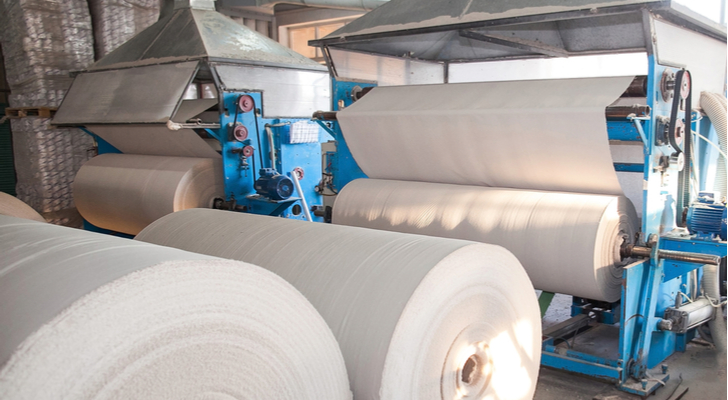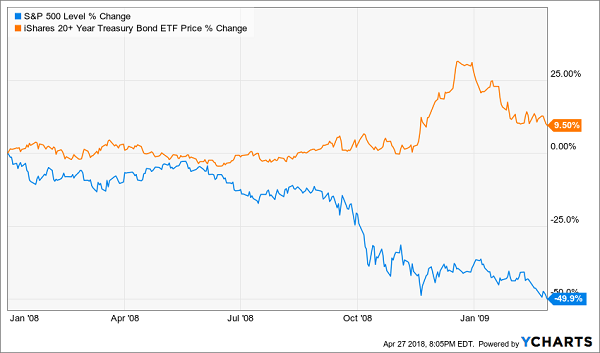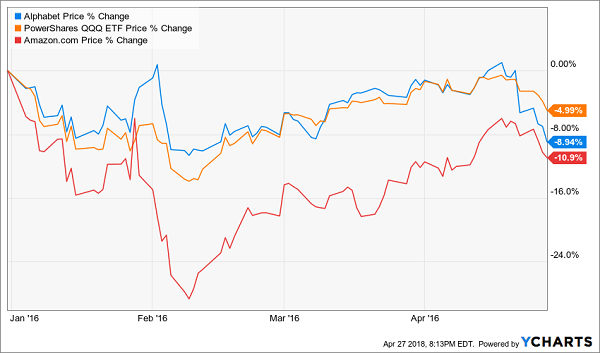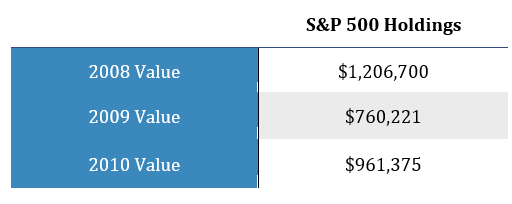
Source: Shutterstock
Small-cap stocks. They fly under the radars of most investors, who struggle to look past behemoths like Apple Inc. (NASDAQ:AAPL) and familiar names like Facebook, Inc. (NASDAQ:FB). Small-cap stocks that are well worth owning are out there though. They’re just usually overlooked because they can’t get enough people’s attention.
Investors willing to look under a few unturned rocks, however, can sometimes find buried treasure.
To that end, here’s a run-down of the top 10 small-cap stocks to consider right now as the broad market continues to toy with a more serious breakdown. Not only are some of these names high-potential possibilities in their own right, quite often smaller names trade out of sync with the overall market and may well offer a refuge should things get ugly for the market’s bigger players. In some cases, the underlying chart is just as compelling as the fundamental argument is.
In no particular order, here are the top 10 small-cap stocks with large-cap potential:
Small-Cap Stocks With Large-Cap Potential: Sunrun (RUN)
While the broad solar-power movement may be bumping into headwinds — ranging from subsidies to cheap natural gas to consumer hesitance — not every name is getting caught up in the industry’s entanglements. Sunrun Inc (NASDAQ:RUN), which not only installs solar panelsbut will also facilitate the financing of them, continues to make forward progress.
Quantifying this growth is this year’s expected revenue growth of 26%, which should be enough to crank per-share profits up from last year’s 86 cents to $1.16 this time around. More of the same is in the cards next year as well.
RUN stock is on a tear too, up 71% for the past twelve months, and knocking on the door of a new multi-year high.
Small-Cap Stocks With Large-Cap Potential: CubeSmart (CUBE)
Not all small-cap stocks to buy have to be ‘stocks’ in the traditional sense. They can be REITs too, and offer the same kind of upside.
Enter CubeSmart (NYSE:CUBE) — a real estate investment trust that specializes in self-storage facilities. Americans are keeping as much of their junk as ever — if not more — and CubeSmart is more than happy to capitalize on consumers’ unwillingness to let things go. The clincher: A dividend yield of 4.1% is above the market average. And this company has a history of strong and steady increases in its payout.
Yes, the prospect of more rate hikes looms above and that could put downward pressure on CUBE shares. There may be more bark than bite to that possibility though, and most of the downside is already baked into the REIT’s price.
Small-Cap Stocks With Large-Cap Potential: G-III Apparel (GIII)
It would be easy to dismiss G-III Apparel Group, Ltd. (NASDAQ:GIII) as just another eventual casualty of the so-called retail apocalypse. But doing so oversimplifies G-III Apparel’s position in this marketplace .
You know the company, even if you don’t think you know the company. G-III is one of the names that makes clothing which eventually carry labels from Calvin Klein, DKNY, Levi’s, Starter, Guess and more. It operates on the less volatile side of the business, supplying clothing for brands that take the bulk of the risk.
One only has to look at GIII’s Q4 report, which boasted a nearly 18% improvement in year-over-year sales at a time when most retailers are thrilled just to match their year-over-year comps.
Small-Cap Stocks With Large-Cap Potential: Simply Good Foods (SMPL)
If you’ve not heard of Simply Good Foods Co (NASDAQ:SMPL), there’s a good reason — the company didn’t exist until June of last year, when it was formed to capitalize on a branch of Atkins Nutritionals (Editor’s Note: Source is behind a paywall).
Despite a sub-$1 billion market cap that keeps it off a lot of investors’ radars, Simply Good Foods has attracted the attention of several high-profile players. All four of the research outfits that have initiated coverage of the company have called it a “Buy,” and Goldman Sachs Asset Management owns a little more than 7% of the company.
Moreover, the pros collectively say SMPL is worth $16.20, up 27% from its current value.
Small-Cap Stocks With Large-Cap Potential: R1 RCM (RCM)
Not only is R1 RCM Inc (NASDAQ:RCM) another one of those small-cap stocks that not many investors have heard of, but the name doesn’t really inspire investors to dig much deeper. Nevertheless, R1 RCM is one of a handful of small-cap stocks to buy sooner than later.
R1 RCM helps healthcare facilities manage their revenue cycle. In other words, the company offers a platform that helps hospitals reduce waste, eliminate mistakes and collect patient fees faster and more effectively.
Baird analyst Matthew Gillmor noted in his recent upgrade of RCM stock: “our prior survey work suggests hospitals are increasingly receptive to outsourcing, especially for RCM,” adding “Additionally, the run-rate exiting 2020 should be even higher (perhaps >$250M), as margins will still be ramping and R1 should benefit from automation initiatives.”
Small-Cap Stocks With Large-Cap Potential: Sally Beauty Holdings (SBH)
Calling a spade a spade, it will take some guts to step into Sally Beauty Holdings, Inc.(NYSE:SBH) here and now. The stock is down 10% for the past twelve months, never catching the wave that pushed most other stocks higher for the better part of 2017.
Of course, with stagnant revenue and a net income that’s slowly-but-surely shrinking, who can blame the doubters?
The company finally seems to have had a much-needed wake-up call though. A month ago it unveiled credible plans to do some serious cost-cutting that will ultimately fund long-term growth. The ‘growth’ plans themselves are still scant, but it’s a start. Any progress from a company with a stock that’s only trading at 7.0 times its forecasted earnings has a lot of potential.
Small-Cap Stocks With Large-Cap Potential: Diebold Nixdorf (DBD)
It’s another unfortunately-named organization. And, there’s no sales growth to speak of, and earnings growth is minimal. So why bother looking at Diebold Nixdorf Inc (NYSE:DBD)? Because a new CEO could be just the tweak this ATM and POS technology provider needs become a great company.
That’s what activist investor Alexander Roepers says anyway. He’s thrilled about Gerrard Schmid, who took the helm in February. “The newly combined company is now set up for success,” Roepers explained, adding that he felt DBD might even double in value within the next 18 months.
The analyst community sees better days too, even if they’re not as optimistic as Roepers is. They’re calling for earnings of $1.56 per share next year, up from this year’s outlook of $1.16.
Small-Cap Stocks With Large-Cap Potential: Quidel (QDEL)
Quidel Corporation (NASDAQ:QDEL) makes a variety of medical diagnostic equipment. Nothing earth-shattering, but all of it marketable.
Don’t let the boring product line fool you though. It won approval for a couple of key products in the last year, and the acquisition of Triage late last year led to a 118% increase in Q4 revenuethat gave the company the scale it needed to clear significant profits.
It’s all enough for Raymond James analyst Nicholas Jansen to tout the stock, upgrading it to a “Strong Buy” and upping his price target to $69. Jansen feels the market underestimates the growth opportunities that will arise as its platforms add to their functionality and cross-selling begins in earnest.
Small-Cap Stocks With Large-Cap Potential: Rayonier Advanced Materials (RYAM)
In case you’re wondering, yes, Rayonier Advanced Materials Inc (NYSE:RYAM) is an offshoot from Rayonier Inc. (NYSE:RYN). The 2014 spinoff was meant to give the company’s cellulose division its best shot at realizing its full value, and not get in the way of everything else forestry player Rayonier was doing.
Yep, it’s boring. Cellulose and pulp, used to make paper, is anything but cutting edge. There’s a lot to be said for boring products though, and for Rayonier Advanced Materials in particular.
Hedge fund manager Mick McGuire, of Marcato Capital Management, sees the full potential, but adds that to unlock it the “company should concentrate on integrating its recent acquisition, paying down debt and buying back stock.” If it can do that, he feels RYAM shares could be worth as much as $60 within three years. That’s almost three times as much as its current price.
Small-Cap Stocks With Large-Cap Potential: TiVo Corp (TIVO)
Last but not least, add TiVo Corp (NASDAQ:TIVO) to your list of small-cap stocks to buy for their unexpected growth.
Yes, this is the same TiVo that makes set-top television tuners/boxes used by cable television subscribers. It seems like a bit of an uphill battle, with the cord-cutting movement in full swing, and with streaming boxes like the Apple TV or Roku being the go-to alternative platform that makes cord-cutting possible.
Take a closer look at what’s going on with the cord-cutting movement though. Many consumers are hesitant to give up their cable boxes because in so doing, they also give up their video-recording capabilities and their access to sports and special broadcast events.
TiVo’s solution is a set-top box that allows for the recording of antenna-delivered broadcasts. As more and more consumers realize TiVo can deliver the best of all worlds without an actual cable subscription, it’s positioned to be one of the centerpieces of the cord-cutting movement.
Buffett just went all-in on THIS new asset. Will you?
Buffett could see this new asset run 2,524% in 2018. And he's not the only one... Mark Cuban says "it's the most exciting thing I've ever seen." Mark Zuckerberg threw down $19 billion to get a piece... Bill Gates wagered $26 billion trying to control it...
What is it?
It's not gold, crypto or any mainstream investment. But these mega-billionaires have bet the farm it's about to be the most valuable asset on Earth. Wall Street and the financial media have no clue what's about to happen...And if you act fast, you could earn as much as 2,524% before the year is up.
Click here to find out what it is.
Source: Investor Place


















